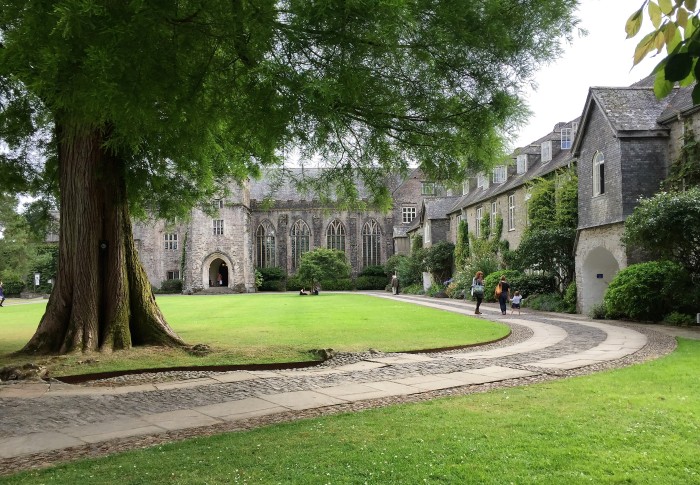Last week I posted two days late for World Book Day, this week two days late for International Women’s Day. So what? Every day should be international women’s day, until the ridiculous imbalance between two types of human being is resolved.
That’s a big ask, so I’ll start with a few examples you can show your daughters and your sons. Stand by for two heroines from my childhood reading, two from that of my children, and a couple of adults. Some fictional, some factual, all pointing in the right direction though the route may look circuitous to some of you.

The American writer Laura Ingalls Wilder fictionalised her own pioneer childhood. In the second half of the 19th century , Laura, the second of Pa and Ma’s four daughters, travelled in a covered wagon from Wisconsin to South Dakota, encountering meteorological and man made hazards all the way. I read her books as a child in suburban North London. Her family were (had to be) independent, tough, adaptable and with four daughters, Pa lacked the help he needed to tend the farm they eventually settled. So Laura persuaded her mother to let her help him, and as he said, it was just the ticket. We learn that if a man gives a woman an opportunity, she’ll repay it manifold. Along the way, we learn how to clean a gun and make bullets (as clear a description as any Boy Scout manual, perhaps Trump should ban it as terrorist training), how to build a log cabin and all the necessary furniture, how to cross a river in flood or survive a blizzard on the prairie, teach a class of students when both teacher and pupils are the same age (sixteen), treat malaria, break in a horse, and make a poke bonnet. Without transgressing the politics of her stratified and conservative society, Laura Ingalls Wilder makes the strongest of social, business and emotional cases for girls and boys to be educated and valued equally.
Dido Twite is entirely fictional. She’s the heroine of Joan Aiken’s Wolves of Willoughby Chase series but first appears in the second book. A neglected London waif with an eye for the main chance, innate crafty intelligence and a yearning for affection, Dido is resourceful, fit and adaptable from day one. She needs to be: over the course of seven books, she survives a burning shipwreck, comes round from a coma on a whaling ship in Nantucket, foils at least four treacherous plots against the king including one where a giant gun is to be fired across the Atlantic to displace the UK (sound familiar?) overpowers a tyrannical queen who practises human sacrifice, escapes an overturned coach with a drunken driver, a plague of spiders, and various poisoning attempts, stops St Paul’s Cathedral rocking on its foundations, shines a light on hypocrisy and privilege, cares for the sick and frail, rescues children trapped labouring down mines, puts an end to dangerous sects and stands up against injustice and cruelty. (This potted biography may be muddled; the books are complex and I’m due a reread. Anyway, she’s a helluva role model.)

My children read these, took them in and then along came Hermione Granger and Lyra Belacqua. You all know Hermione: the ambitious want-it-all student who got a bit tired and stressed when a spell helped her attend several classes simultaneously to beat timetable clashes, thus enabling her to learn enough magic to get hapless Ron and dull Harry out of their latest dilemma all while juggling the two different worlds she lives in. (Dull Harry? Yes, I’m afraid I can only ever think of him as a plot dump with very little character of his own. But Hermione, Ginny, Luna Lovegood…J.K Rowling to my mind writes better female characters.) And both Emma Watson and J K Rowling have since put some of the Harry Potter money where their mouths are, promoting women’s rights in various practical ways. I can’t be bothered with the carping about the dresses they wear while doing so: nobody criticises the way men dress when they’re trying to better their world (all the time, since the dawn of it).
 The only one of these heroines created by a man is Philip Pullman’s Lyra Belacqua, due to resurface soon, I’m delighted to hear. Time travel? Pah! This heroine does inter galactic travel (I think – my grasp of physics is less good than Pullman’s). She’s feisty (aren’t they all?), a bit uncouth (shades of Dido there), an incredibly fast learner and again like Dido, in need of a loving family. Instead her mother is Mrs Coulter, surely a magical version of Mrs Thatcher/Theresa May with her love of good accessories and her twists into sheer evil. She’s not pictured on any of the covers I found (strange: the iconography of women’s beauty is all over the place, but put an intelligent heroine on a book cover?) However, here’s an earlier Philip Pullman heroine, the wonderful 19th century detective Sally Lockhart. Who needs Holmes and Watson with her around? There are four Sally Lockhart books, all quite gripping.
The only one of these heroines created by a man is Philip Pullman’s Lyra Belacqua, due to resurface soon, I’m delighted to hear. Time travel? Pah! This heroine does inter galactic travel (I think – my grasp of physics is less good than Pullman’s). She’s feisty (aren’t they all?), a bit uncouth (shades of Dido there), an incredibly fast learner and again like Dido, in need of a loving family. Instead her mother is Mrs Coulter, surely a magical version of Mrs Thatcher/Theresa May with her love of good accessories and her twists into sheer evil. She’s not pictured on any of the covers I found (strange: the iconography of women’s beauty is all over the place, but put an intelligent heroine on a book cover?) However, here’s an earlier Philip Pullman heroine, the wonderful 19th century detective Sally Lockhart. Who needs Holmes and Watson with her around? There are four Sally Lockhart books, all quite gripping.
 This article would be too long if I went into the writers for adults who inspired my feminism, so I’ll just cite the first and the most recent. In the 1980s I studied Simone de Beauvoir’s fiction and how it related to her life and philosophy; I haven’t read it since but suspect it would still stand up, in a good translation. At university my path crossed very briefly with an author whose work was published two days ago on International Women’s Day 2017. How about this for an in your face title and cover, by the co-founder of the Women’s Equality Party which now has twice as many members as UKIP. Catherine Mayer is of course not fifty feet tall in real life, but history may well see her as a giantess. I bet she was brought up on Laura and Dido.
This article would be too long if I went into the writers for adults who inspired my feminism, so I’ll just cite the first and the most recent. In the 1980s I studied Simone de Beauvoir’s fiction and how it related to her life and philosophy; I haven’t read it since but suspect it would still stand up, in a good translation. At university my path crossed very briefly with an author whose work was published two days ago on International Women’s Day 2017. How about this for an in your face title and cover, by the co-founder of the Women’s Equality Party which now has twice as many members as UKIP. Catherine Mayer is of course not fifty feet tall in real life, but history may well see her as a giantess. I bet she was brought up on Laura and Dido.

©Jessica Norrie 2017







 Steep stone steps led to a small wooden hut whose interior swelled Narnia-like to encompass a bay window and another storey below. Here we descended to write our stories on days when the rain lashed the leaded panes and the clouds grumbled through the grey skies. But such times were few: in sunnier hours we found secluded dells and tranquil shade wherein to nurse our newborn words.
Steep stone steps led to a small wooden hut whose interior swelled Narnia-like to encompass a bay window and another storey below. Here we descended to write our stories on days when the rain lashed the leaded panes and the clouds grumbled through the grey skies. But such times were few: in sunnier hours we found secluded dells and tranquil shade wherein to nurse our newborn words.


You must be logged in to post a comment.